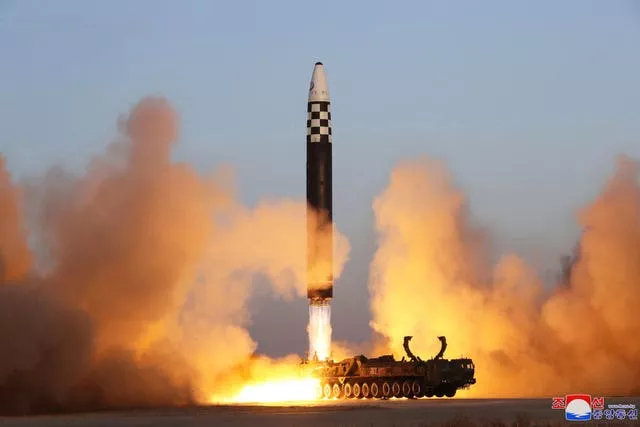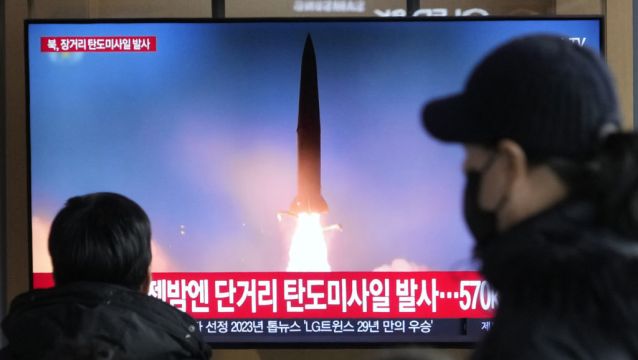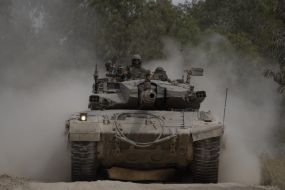North Korea fired an intercontinental ballistic missile (ICBM) into the sea on Monday in a resumption of its high-profile weapons testing activities, South Korea said.
South Korea’s military said in a statement that the North Korean missile flew about 1,000 kilometres before landing in the waters between the Korean Peninsula and Japan.
It said the missile was launched on an elevated angle, an apparent attempt to avoid neighbouring countries.
The statement called the launch “a grave provocation” that threatens international peace. It also noted the launch violated UN Security Council resolutions that ban any ballistic missile activities by North Korea.

Japan’s Defence Ministry said it also spotted a ballistic missile launch by North Korea. Japanese Prime Minister Fumio Kishida told reporters that he had so far received no report of injuries or damages from the missile launch and that he planned to hold a National Security Council meeting to discuss the test.
The launch, the North’s first ICBM test-flight in about five months, was its second weapons firing in less than a day. On Sunday night, the North launched a short-range ballistic missile, also into the water off its east coast, according to the South Korean, Japanese and US governments.
South Korea’s military said the short-range missile flew about 570 kilometres before landing in the waters between the Korean Peninsula and Japan. The range is enough to reach key sites in South Korea, including US military installations there.
The US military said in a statement the launch highlighted “the destabilizing impact of (North Korea’s) illicit weapons program”.
Observers said the North’s back-to-back launches were likely a protest against the moves by South Korea and the United States to bolster their joint nuclear deterrence capabilities in the face of North Korea’s evolving nuclear threats.
Senior US and South Korean officials met in Washington on Friday for their second Nuclear Consultative Group meeting.
They agreed to update their nuclear deterrence and contingency strategies and incorporate nuclear operation scenarios in their combined military exercises next summer, according to Seoul officials.
The consultative body is responsible for sharing information on nuclear and strategic weapons operation plans and joint operations, though the US will retain operational control of its nuclear weapons.
US officials said the group’s establishment and other steps to solidify US security commitments were meant to ease South Korean worries about North Korean provocations while keeping Seoul from pursuing its own nuclear programme.
A joint statement issued after Friday’s meeting said the US side “reiterated that any nuclear attack by (North Korea) against (South Korea) will be met with a swift, overwhelming, and decisive response”.
On Sunday, North Korea’s Defence Ministry slammed its rivals’ move to include nuclear operation scenarios in their joint drills, describing it as an open threat to potentially use nuclear weapons against the North.
A statement said: “The armed forces of (North Korea) will thoroughly neutralise the US and its vassal forces’ attempt to ignite a nuclear war.
“Any attempt by the hostile forces to use armed force against (North Korea) will face a pre-emptive and deadly counteraction.”
Since last year, North Korea has performed about 100 ballistic missile tests as part of its efforts to enlarge its arsenal of nuclear-capable weapons targeting the US and its allies.
Experts say North Korea would eventually aim to use its weapons arsenal to wrest greater US concessions.
The US and South Korea have responded by expanding their military drills and increased the temporary deployments of strategic US assets such as aircraft carriers, nuclear-capable bombers and a nuclear-armed submarine in and near South Korea.







